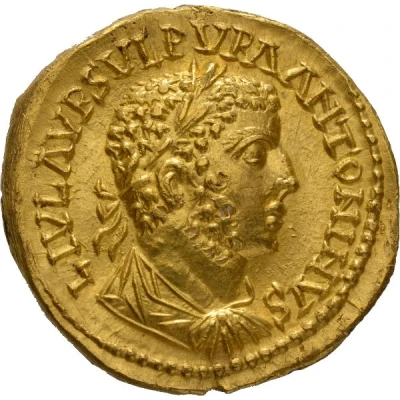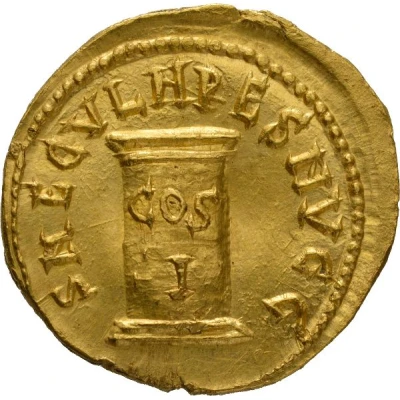


© Staatliche Münzsammlung München (CC BY-NC-SA 4.0 DE)
Aureus - Uranius Antoninus SAECVLARES AVGG
| Gold | 5.7 g | 21 mm |
| Issuer | Usurpations of Syria (Roman Imperial usurpations) |
|---|---|
| Emperor | Uranius Antoninus (253) |
| Type | Standard circulation coin |
| Years | 253-254 |
| Value | Aureus = 25 Denarii |
| Currency | Denarius, Reform of Augustus (27 BC – AD 215) |
| Composition | Gold |
| Weight | 5.7 g |
| Diameter | 21 mm |
| Shape | Round (irregular) |
| Technique | Hammered |
| Demonetized | Yes |
| Updated | 2024-10-10 |
| Numista | N#284768 |
|---|---|
| Rarity index | 100% |
Reverse
Column inscribed COS I.
Script: Latin
Lettering: SAECVLARES AVGG
Translation:
Saeculares Duorum Augustorum.
Secular Games of the two emperors (Augusti).
Comment
Mass varies: 5.53–5.85 g;Diameter varies: 21–21.1 mm;
Example of this type:
Staatliche Münzsammlung München
Source:
Online Coins of the Roman Empire (OCRE)
Interesting fact
One interesting fact about the Aureus - Uranius Antoninus (SAECVLARES AVGG) coin is that it features a unique blend of Roman and Syrian cultural influences in its design. The coin's obverse side bears the image of Uranius Antoninus, who was a Roman usurper who ruled over Syria and parts of the Roman Empire in the 3rd century AD. The reverse side of the coin features a depiction of the Roman goddess Victory, along with an inscription that reads "SAECVLARES AVGG," which translates to "Forever Augusti," indicating the coin's issuance during the reign of a Roman emperor. This blending of cultural influences is a testament to the diverse and complex history of the Roman Empire during this time period.